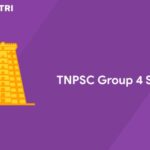The Secondary School Leaving Certificate (SSLC) exam is a crucial milestone in a student’s academic journey. As the final step before moving on to higher education, the SSLC exam holds immense significance. To help students navigate this pivotal exam, educational authorities provide SSLC model question papers, which serve as valuable resources for preparation.
These model question papers offer a glimpse into the exam format, question types, and the level of difficulty students can expect. By familiarizing themselves with these model papers, students can gain a deeper understanding of the examination pattern and enhance their chances of success.
Importance of Practicing SSLC Model Question Papers
Practicing SSLC model question papers is essential for several reasons:
- Exam Familiarity: By solving these model papers, you can become acquainted with the exam structure, the distribution of marks, and the overall format of the SSLC examination.
- Time Management: Model question papers help you develop effective time management skills, as you learn to pace yourself and complete the exam within the stipulated time.
- Identifying Strengths and Weaknesses: Solving model papers allows you to pinpoint your areas of strength and weakness, enabling you to focus your preparation efforts accordingly.
- Confidence Building: Consistent practice with model question papers boosts your confidence and helps you approach the actual exam with a positive mindset.
How to Use SSLC Model Question Papers Effectively
To make the most of SSLC model question papers, consider the following strategies:
- Familiarize Yourself with the Exam Pattern: Carefully study the structure of the model question papers, including the distribution of marks, the types of questions, and the overall layout of the exam.
- Time Yourself: When solving the model papers, practice managing your time effectively by adhering to the given time limits for each section or subject.
- Analyze Your Performance: After completing the model papers, carefully review your answers, identify areas for improvement, and make note of the topics or question types that require more attention.
- Seek Feedback: Discuss your performance with your teachers or mentors, and seek their guidance on how to enhance your preparation based on the insights gained from the model papers.
- Simulate Exam Conditions: Whenever possible, try to recreate the exam environment by solving the model papers in a quiet, distraction-free setting, just as you would during the actual SSLC exam.
Analyzing the Structure of the SSLC Model Question Paper
The SSLC model question papers typically follow a standardized structure that includes the following components:
- Subject-wise Sections: The question paper is divided into sections based on the different subjects, such as Mathematics, Science, Social Science, and Languages.
- Question Types: The questions in the model papers cover a range of formats, including multiple-choice, short answer, long answer, and application-based questions.
- Marking Scheme: Each question is assigned a specific number of marks, and the total marks for the paper are clearly indicated.
- Instructions: The model question papers provide clear instructions on the number of questions to be attempted, the time allotted, and any other relevant guidelines.
By understanding the structure of the SSLC model question papers, you can develop effective strategies to approach the actual exam with confidence.
Tips for Solving SSLC Model Question Papers
Here are some valuable tips to help you navigate the SSLC model question papers:
- Read the Instructions Carefully: Ensure that you thoroughly understand the instructions provided before attempting to answer the questions.
- Manage Time Effectively: Allocate your time wisely, ensuring that you can complete all the required questions within the given timeframe.
- Attempt the Easier Questions First: Start by answering the questions you are most confident about, and then move on to the more challenging ones.
- Show Your Workings: For subjects like Mathematics and Science, it is essential to show your step-by-step workings to earn partial marks, even if the final answer is incorrect.
- Review Your Answers: Once you have completed the paper, carefully review your answers to identify and rectify any errors or oversights.
- Seek Clarification: If you encounter any ambiguity or confusion while solving the model papers, don’t hesitate to reach out to your teachers or mentors for guidance.
Understanding the Marking Scheme in SSLC Model Question Papers
The marking scheme for the SSLC model question papers is designed to assess your knowledge, understanding, and application of the subject matter. It is crucial to familiarize yourself with the marking scheme to ensure that you maximize your scores.
Here are some key aspects of the SSLC model question paper marking scheme:
- Question-wise Marks: Each question is assigned a specific number of marks, which is clearly indicated in the model paper.
- Partial Marks: In certain questions, you may be able to earn partial marks for your workings or for providing a partially correct answer.
- Negative Marking: Some model papers may have a negative marking scheme, where you lose a certain number of marks for incorrect answers.
- Weightage of Topics: The distribution of marks across different topics or chapters may vary, so it is essential to focus your preparation accordingly.
By understanding the marking scheme, you can strategize your approach to the SSLC model question papers and optimize your performance.
Sample Questions from the SSLC Model Question Paper 2024 with Answers
Here are a few sample questions from the SSLC Model Question Paper 2024, along with their answers:
Mathematics
- Question: Simplify the expression: (2x^2 – 3x + 4) / (x – 2) Answer: The simplified expression is: 2x – 1
- Question: A train travels at a constant speed of 80 km/h. If the train covers a distance of 240 km, find the time taken by the train to complete the journey. Answer: Time taken = Distance / Speed = 240 km / 80 km/h = 3 hours
Science
- Question: Explain the process of photosynthesis and its importance in the ecosystem. Answer: Photosynthesis is the process by which green plants and certain other organisms use the energy from sunlight to convert carbon dioxide and water into glucose and oxygen. This process is essential for the survival of most living organisms, as it provides the primary source of energy and oxygen in the ecosystem.
- Question: Describe the structure and function of the human heart. Answer: The human heart is a muscular organ located in the chest cavity, responsible for pumping blood throughout the body. It consists of four chambers: the right atrium, right ventricle, left atrium, and left ventricle. The heart’s primary function is to circulate oxygenated blood to the body’s tissues and deoxygenated blood to the lungs for replenishment.
Social Science
- Question: Discuss the role of the United Nations in maintaining global peace and security. Answer: The United Nations (UN) is an international organization founded in 1945 with the primary goal of maintaining international peace and security, developing friendly relations among nations, and promoting social progress, better living standards, and human rights. The UN plays a crucial role in mediating conflicts, providing humanitarian aid, and promoting sustainable development and human rights worldwide.
- Question: Explain the concept of federalism and its implementation in India. Answer: Federalism is a system of government in which power is divided between a central authority and constituent political units, such as states or provinces. In India, federalism is enshrined in the Constitution, where powers are divided between the Union government and the state governments. This system of shared governance allows for greater autonomy and representation at the local level, while also maintaining national unity and cohesion.
Additional Resources for Practicing SSLC Model Question Papers
To further enhance your preparation for the SSLC exam, you can explore the following additional resources:
- SSLC Model Question Paper Archives: Many educational websites and portals offer comprehensive archives of SSLC model question papers from previous years, which you can use for practice.
- Subject-specific Practice Materials: In addition to the model question papers, you can find subject-specific practice materials, such as worksheets, sample papers, and online quizzes, to reinforce your understanding of the curriculum.
- Online Platforms: Explore online platforms and educational apps that provide interactive practice sessions, personalized feedback, and detailed analysis of your performance on SSLC model question papers.
- Guidance from Teachers: Regularly consult with your teachers to discuss your progress, seek their advice on improving your preparation, and clarify any doubts or misconceptions.
- Peer Study Groups: Collaborate with your classmates to form study groups, where you can discuss solutions, share insights, and learn from each other’s experiences in solving the SSLC model question papers.
Benefits of Solving SSLC Model Question Papers with Answers
Consistently solving SSLC model question papers with answers can provide you with a range of benefits:
- Comprehensive Preparation: By covering the entire syllabus through the model papers, you can ensure that your preparation is thorough and well-rounded.
- Improved Time Management: Practicing with timed model papers helps you develop effective time management skills, which are crucial for success in the actual SSLC exam.
- Identification of Strengths and Weaknesses: Analyzing your performance on the model papers allows you to identify your areas of strength and weakness, enabling you to focus your efforts accordingly.
- Confidence Building: Consistent practice with model papers boosts your confidence and helps you approach the SSLC exam with a positive and determined mindset.
- Familiarity with Exam Pattern: Solving the model papers familiarizes you with the exam pattern, question types, and the overall structure of the SSLC examination, ensuring that you are well-prepared.
To further enhance your SSLC preparation, explore our comprehensive collection of SSLC model question papers with detailed answers. Dive into the practice materials and unlock your full potential for success in the upcoming SSLC exam.
Conclusion
SSLC model question papers are invaluable resources that can significantly contribute to your success in the SSLC exam. By understanding the importance of practicing these model papers, utilizing them effectively, and analyzing the structure and marking scheme, you can develop a strong foundation for your SSLC preparation.
















